Philodendrons are among the most sought-after houseplants, admired for their lush tropical foliage and adaptability. While many species develop long vines and require moss poles or trellises for support, others grow in a self-heading manner, standing tall without the need for external reinforcement.
These upright Philodendrons provide structure and elegance to indoor spaces, making them excellent choices for container growing, decorative arrangements, and focal points in homes and offices. Their strong stems and compact growth mean they stay bushy, retaining their form without trailing.
In this guide, we explore 15 of the best upright Philodendron varieties, highlighting their distinct features, care tips, and why they deserve a place in your indoor jungle.
Contents
- 1 Popular Upright Philodendron Varieties
- 1.1 Philodendron Xanadu
- 1.2 Philodendron Congo Green
- 1.3 Philodendron Rojo Congo
- 1.4 Philodendron Prince of Orange
- 1.5 Philodendron Imperial Red
- 1.6 Philodendron Moonlight
- 1.7 Philodendron Birkin
- 1.8 Philodendron McColley’s Finale
- 1.9 Philodendron Selloum (Hope)
- 1.10 Philodendron Golden Dragon
- 1.11 Philodendron White Knight
- 1.12 Philodendron Florida Ghost
- 1.13 Philodendron Verrucosum
- 1.14 Philodendron Mamei
- 2 Care Tips for Upright Philodendrons
- 3 How to Propagate Upright Philodendrons
Popular Upright Philodendron Varieties
Philodendron Xanadu
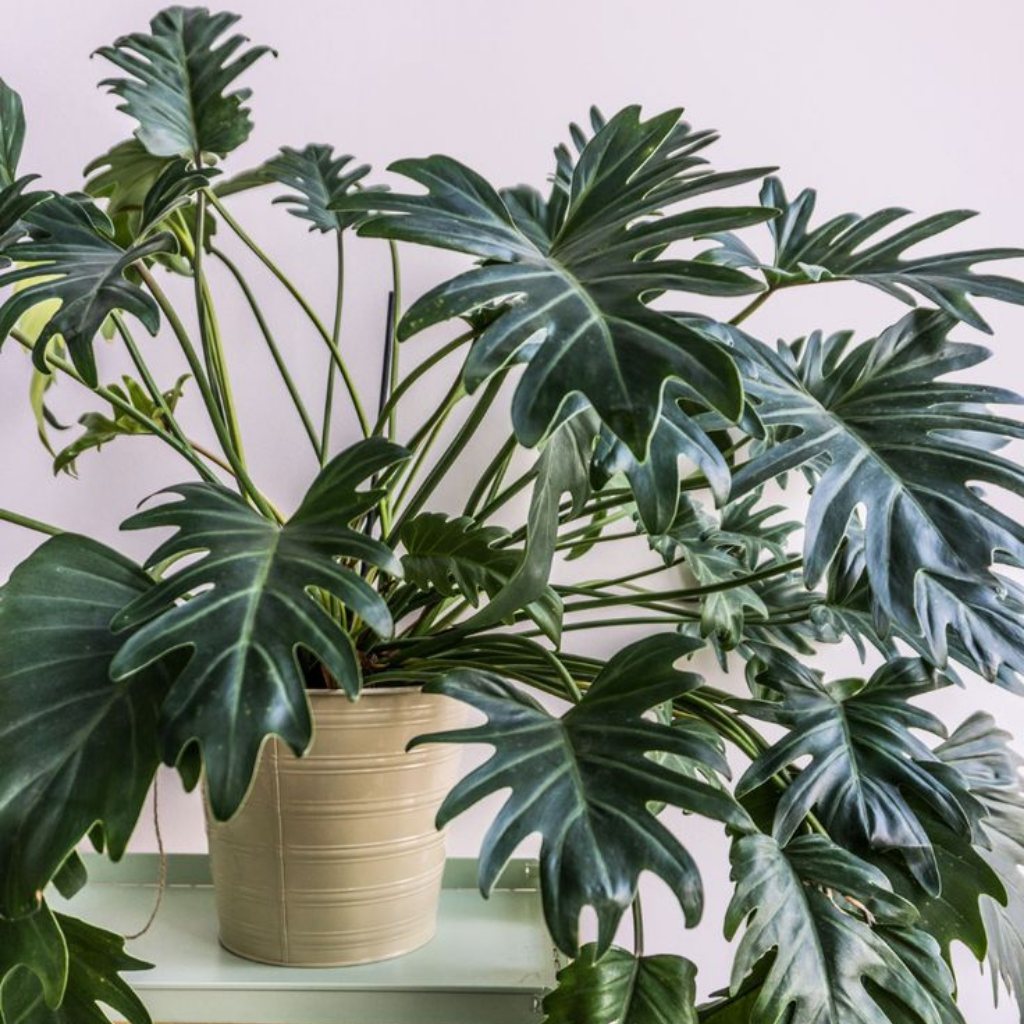
A standout among self-heading Philodendrons, Xanadu boasts deeply lobed, glossy green leaves that grow in a structured rosette shape. It remains compact yet lush, making it an ideal choice for tight spaces where a touch of tropical flair is desired.
- Light: Medium to bright indirect light.
- Watering: Keep soil slightly moist but avoid overwatering.
- Humidity: Moderate to high humidity helps maintain vibrant foliage.
Philodendron Congo Green
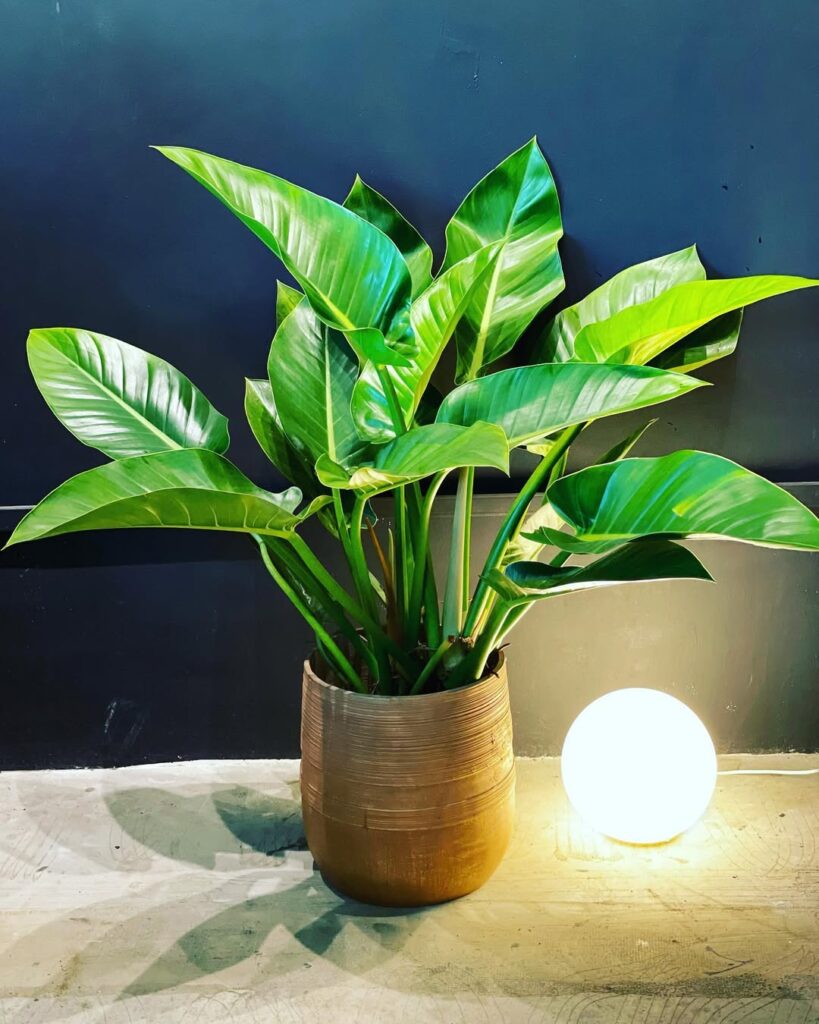
Congo Green presents large, vibrant green leaves with a strong upright stance. Unlike climbing Philodendrons, this variety maintains its shape, creating a bold and tropical display.
- Light: Thrives in bright indirect light.
- Watering: Regular watering, allowing the topsoil to dry slightly between sessions.
- Growth Habit: Can reach up to 3 feet indoors, forming a bushy appearance.
Philodendron Rojo Congo
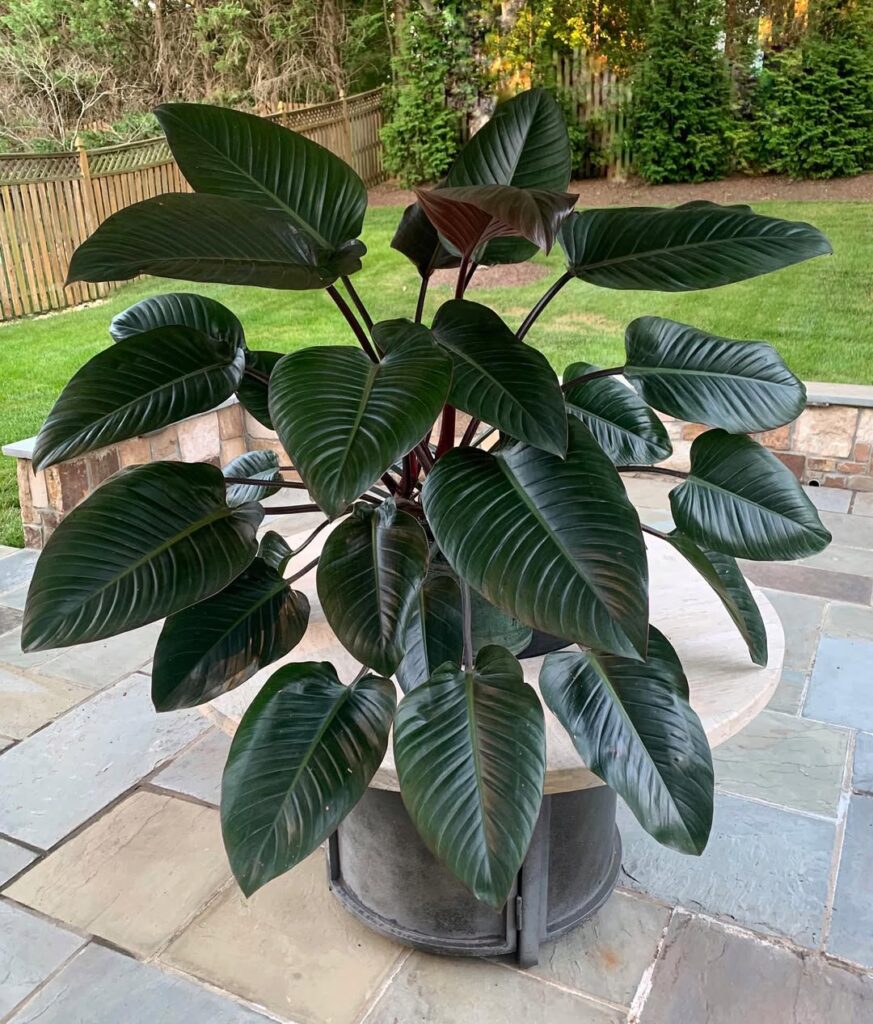
With deep red stems contrasting against dark green leaves, Rojo Congo is a visually striking cultivar that adds a rich, dramatic tone to indoor spaces.
- Light: Prefers moderate to bright indirect light.
- Watering: Allow the soil to dry slightly before watering again.
- Distinct Feature: Its red-tinged stems make it one of the most unique upright Philodendrons.
Philodendron Prince of Orange
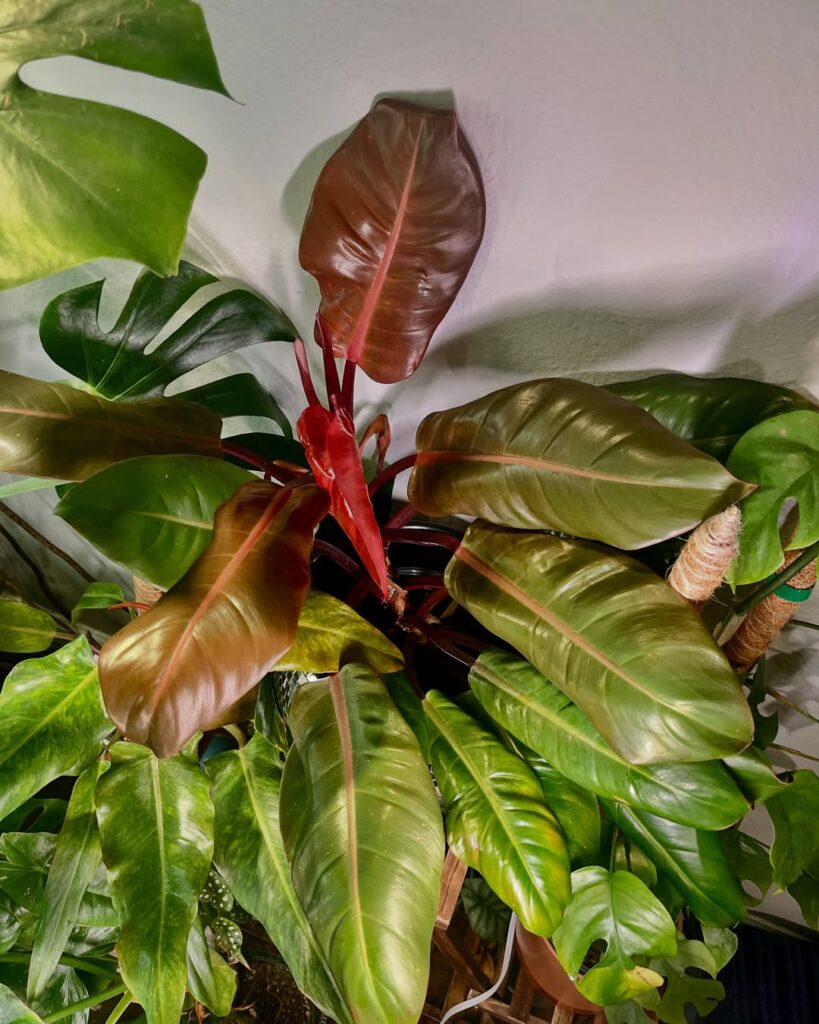
One of the most vibrant self-heading varieties, Prince of Orange unveils stunning orange foliage when young, transitioning into deep green as it matures.
- Light: Prefers bright indirect light to enhance its color.
- Watering: Water when the top inch of soil feels dry.
- Growth Habit: Remains compact with a sturdy base, needing no support.
Philodendron Imperial Red
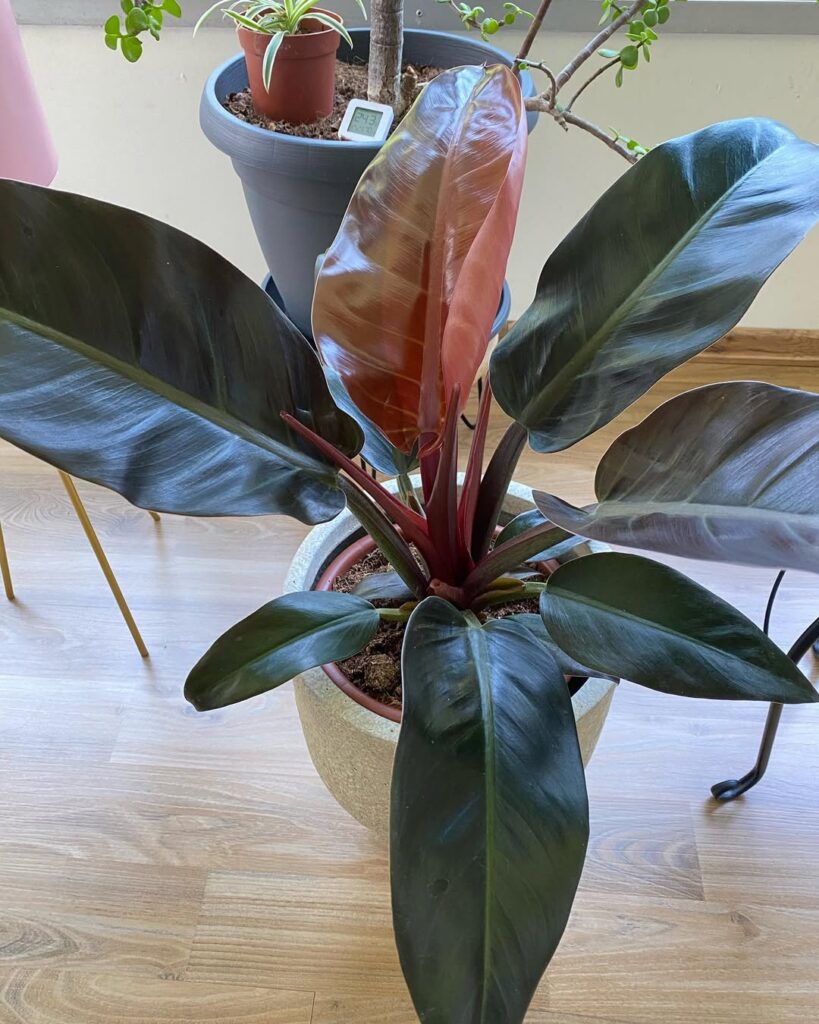
A perfect balance between deep burgundy and green tones, Imperial Red produces broad, structured leaves that darken as they age, adding elegance to indoor collections.
- Light: Medium to bright indirect light for best coloration.
- Watering: Moderate moisture levels with well-draining soil.
- Suitability: A great choice for offices and decorative pots due to its structured growth.
Philodendron Moonlight
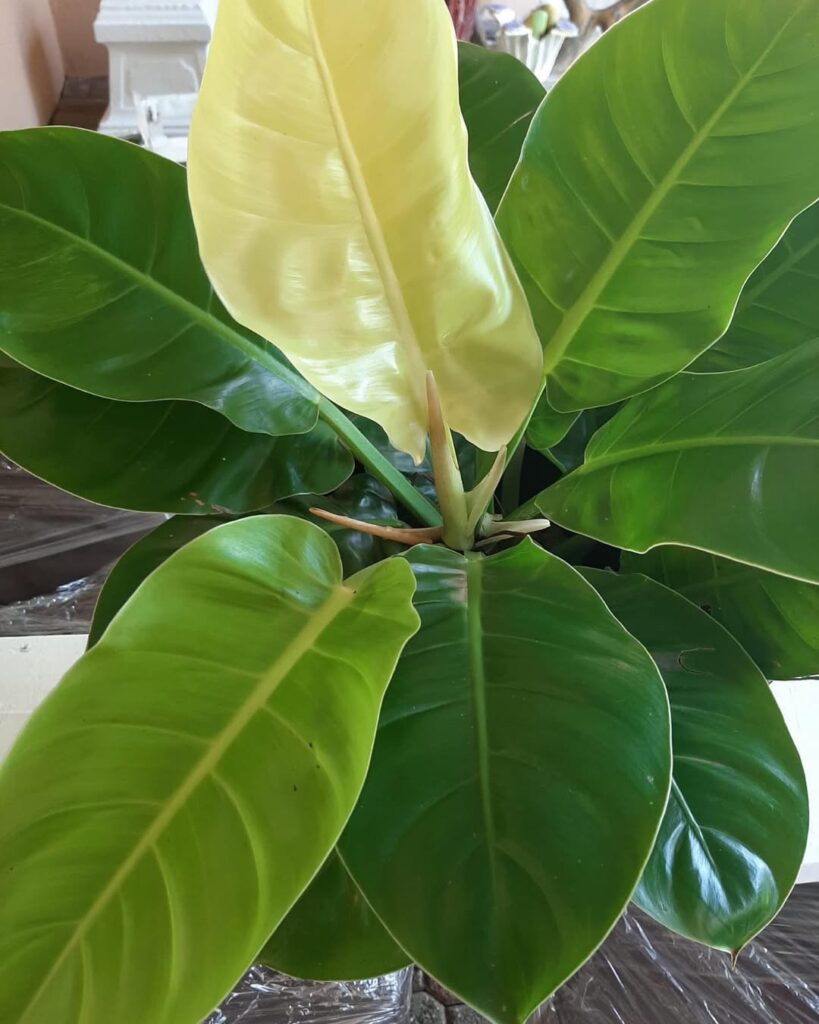
Moonlight is a glowing beauty, featuring bright neon-green leaves that bring a vibrant splash to any indoor setting.
- Light: Thrives in medium light conditions.
- Watering: Prefers slightly damp soil; avoid waterlogging.
- Growth Rate: Fast-growing, adding fresh foliage regularly.
Philodendron Birkin
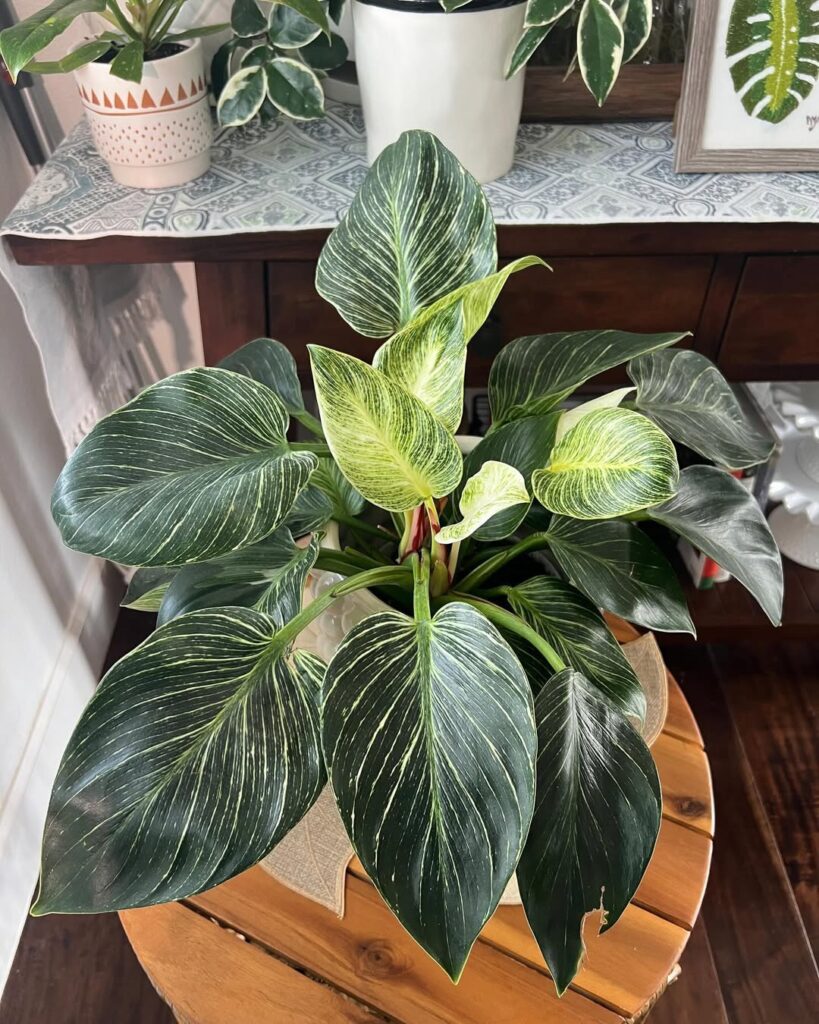
A luxury cultivar, Birkin flaunts stunning white-striped variegation against deep green leaves, making it an eye-catching tabletop or corner piece.
- Light: Best suited for bright indirect light to maintain its variegation.
- Watering: Regular watering with well-draining soil.
- Growth Habit: Slow-growing but stays upright and compact.
Philodendron McColley’s Finale
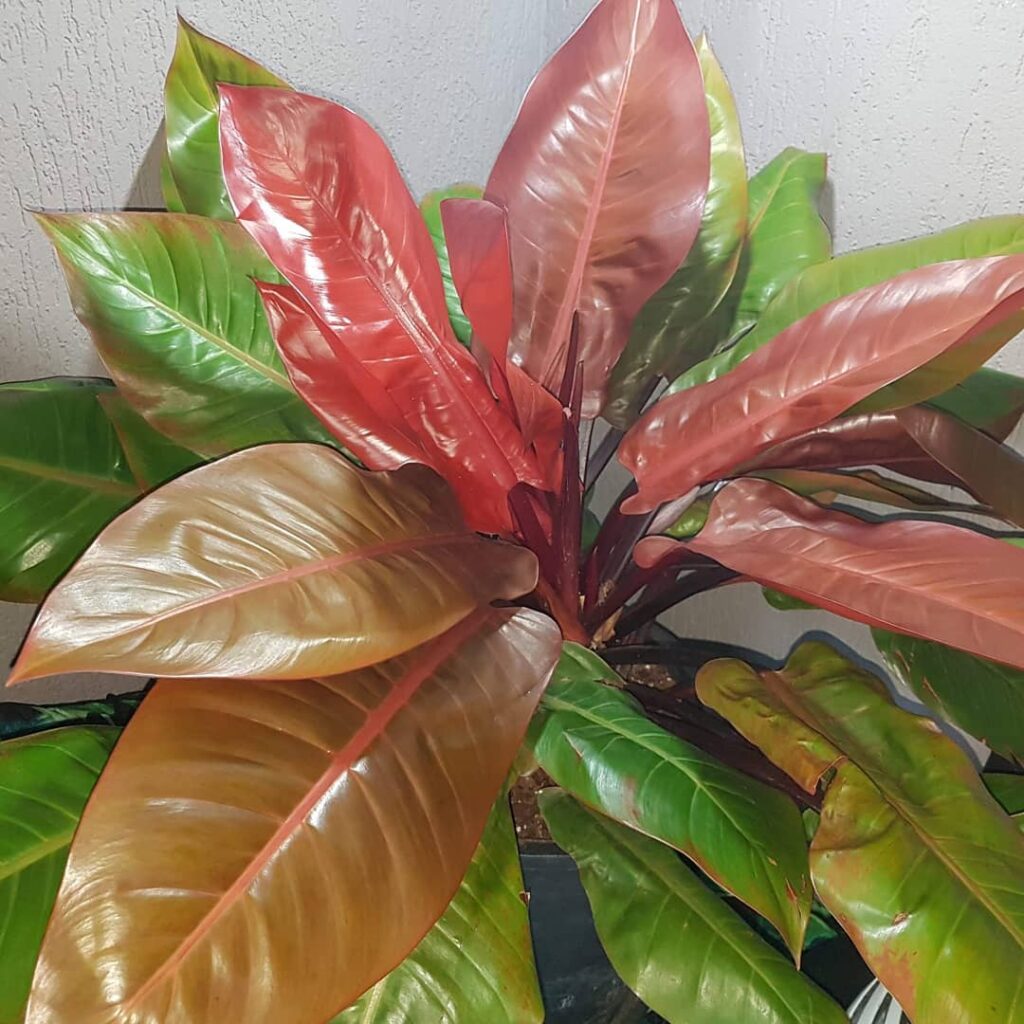
With fiery red-orange new growth, McColley’s Finale is a dynamic cultivar that transitions into deep green as its leaves mature.
- Light: Prefers bright indirect light.
- Watering: Keep soil slightly damp but not soggy.
- Unique Trait: Its changing foliage provides seasonal interest.
Philodendron Selloum (Hope)
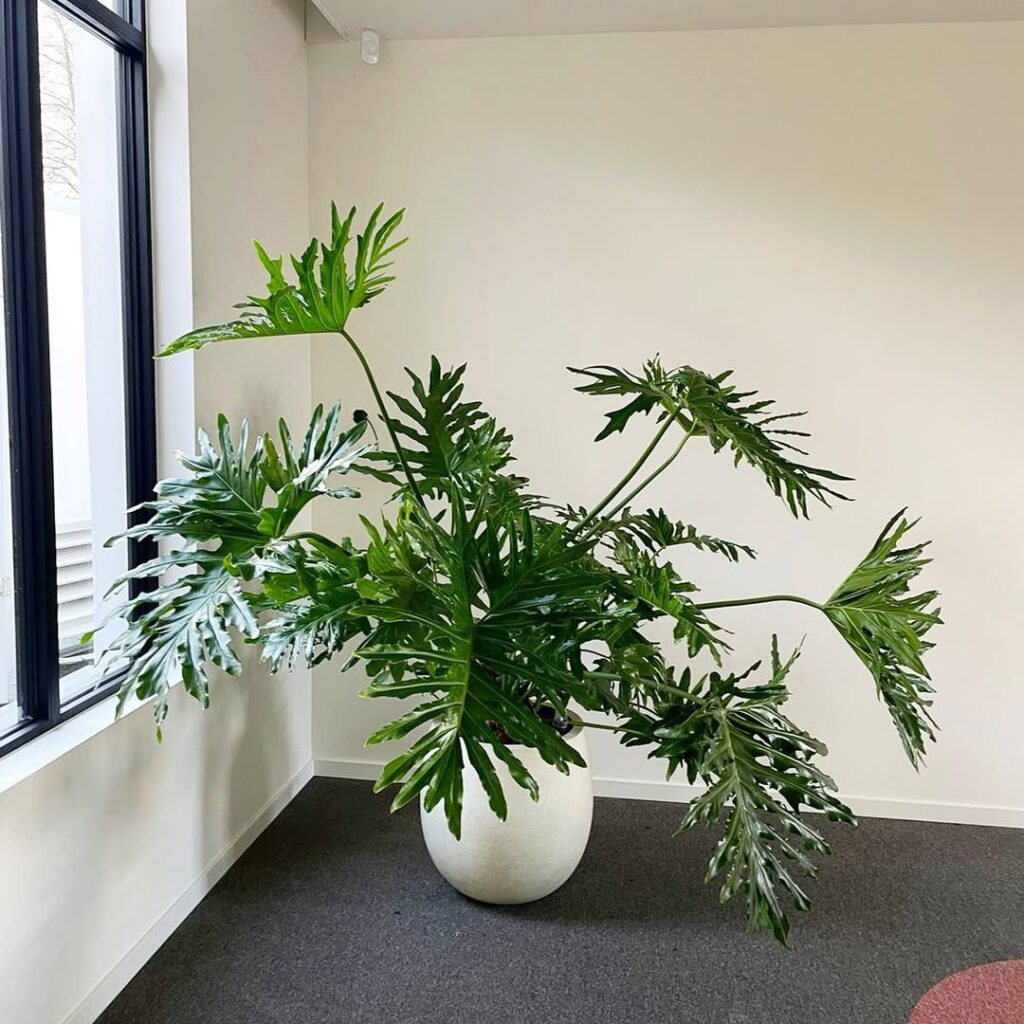
Known for its tropical appeal, Hope Selloum boasts large, deeply lobed leaves that create a lush jungle aesthetic indoors.
- Light: Requires bright, humid conditions to flourish.
- Watering: Loves evenly moist soil but tolerates short dry periods.
- Distinct Feature: Perfect for indoor corners due to its broad foliage spread.
Philodendron Golden Dragon
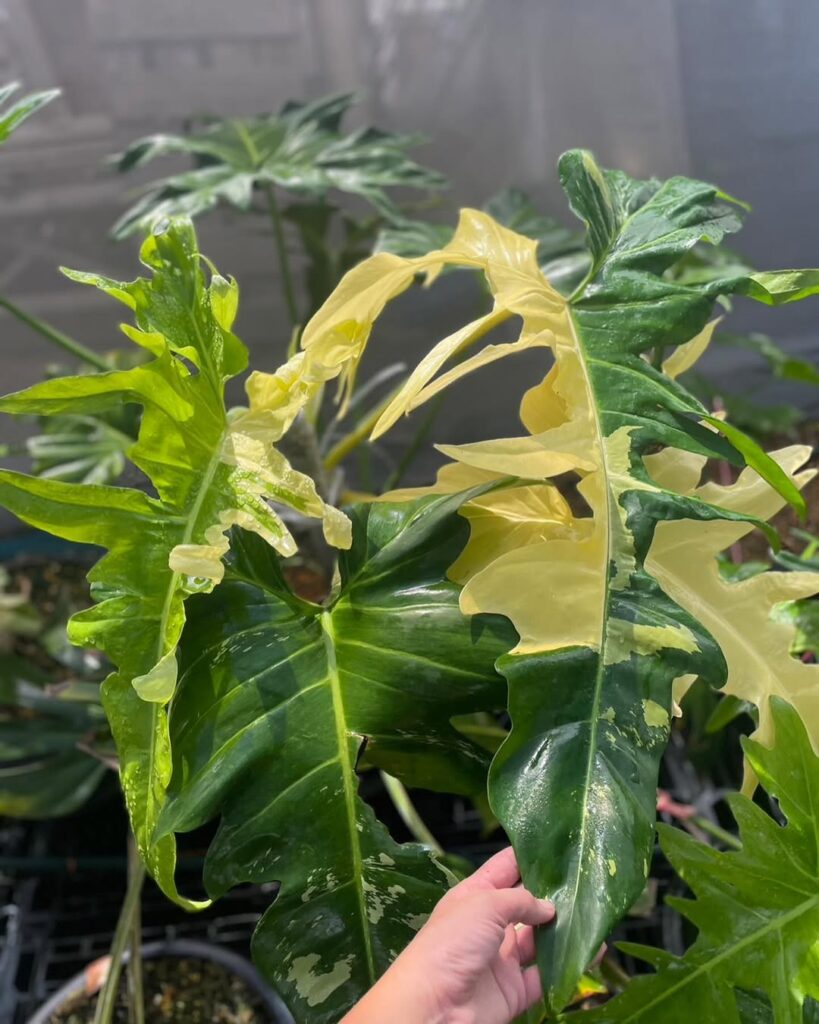
The variegated beauty of Golden Dragon stands out, with green and yellow streaks that enhance its tropical charm.
- Light: Thrives in bright indirect light.
- Watering: Needs frequent misting to maintain leaf vibrancy.
- Indoor Suitability: Ideal for well-lit spaces with high humidity.
Philodendron White Knight
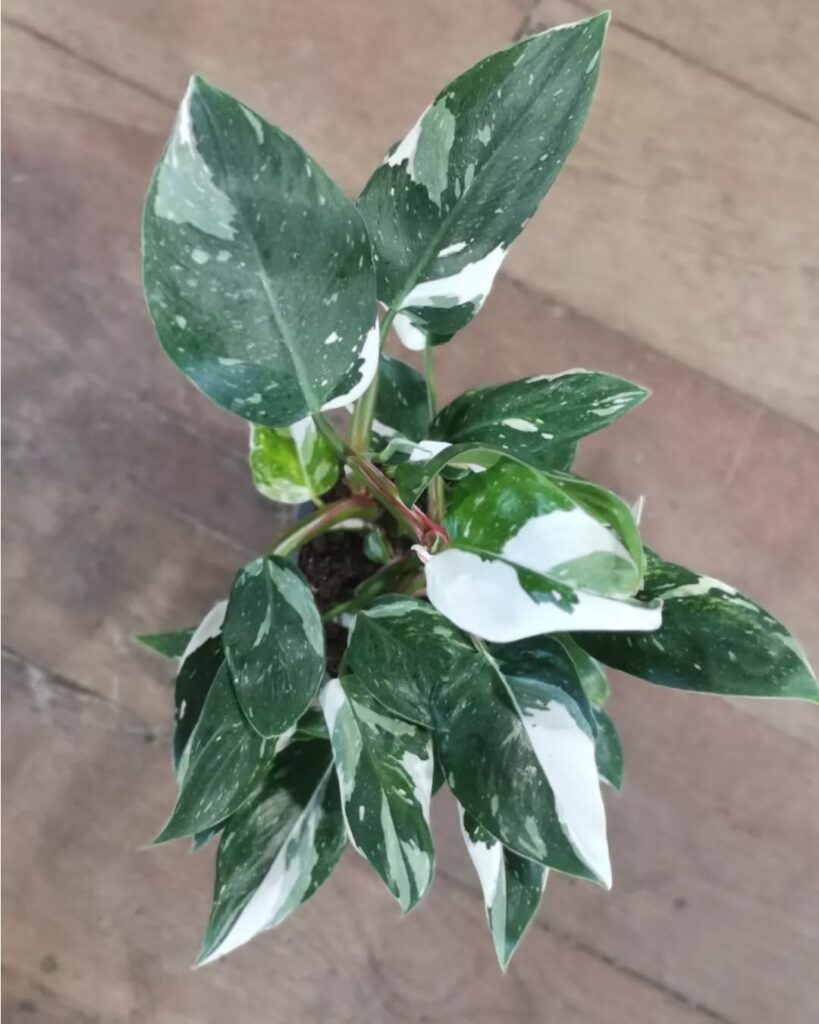
A rare gem, White Knight has striking white variegation, making it highly desirable among collectors.
- Light: Bright indirect light preserves its variegation.
- Watering: Well-draining soil to prevent root rot.
- Distinct Feature: One of the most elegant Philodendrons available.
Philodendron Florida Ghost
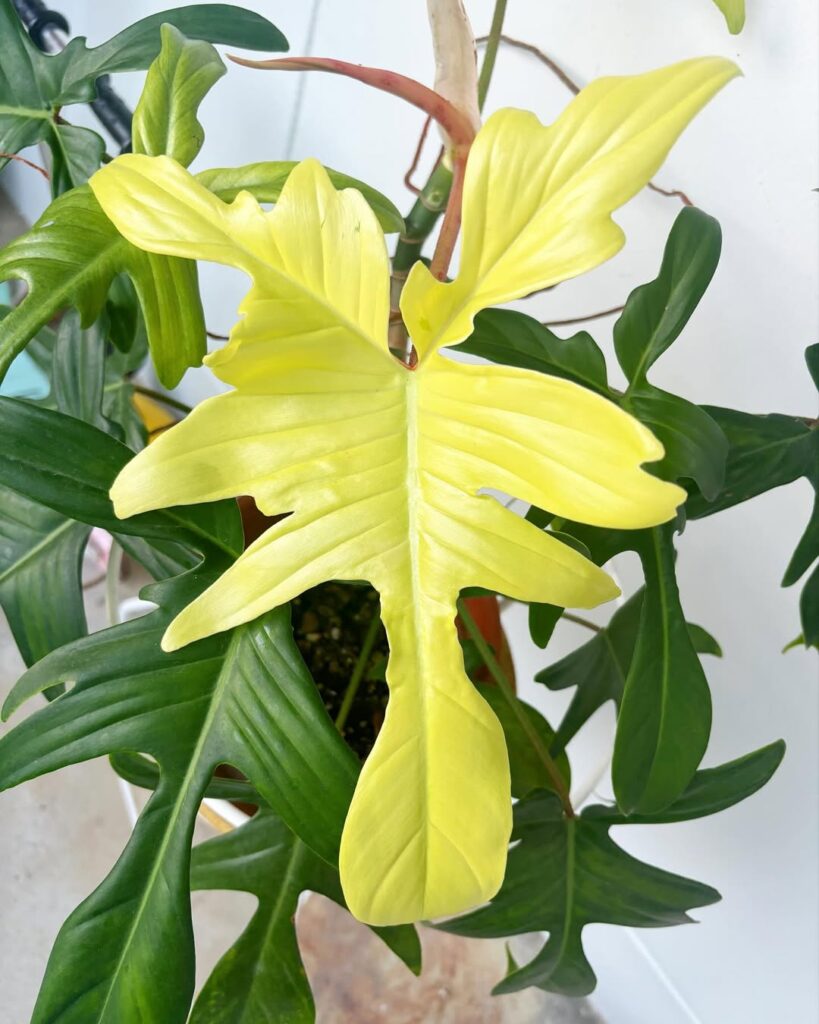
When new, Florida Ghost has almost translucent leaves that gradually darken, creating an otherworldly effect.
- Light: Prefers bright indirect sunlight.
- Watering: Let soil dry slightly between waterings.
- Growth Habit: Compact yet eye-catching due to its color transitions.
Philodendron Verrucosum
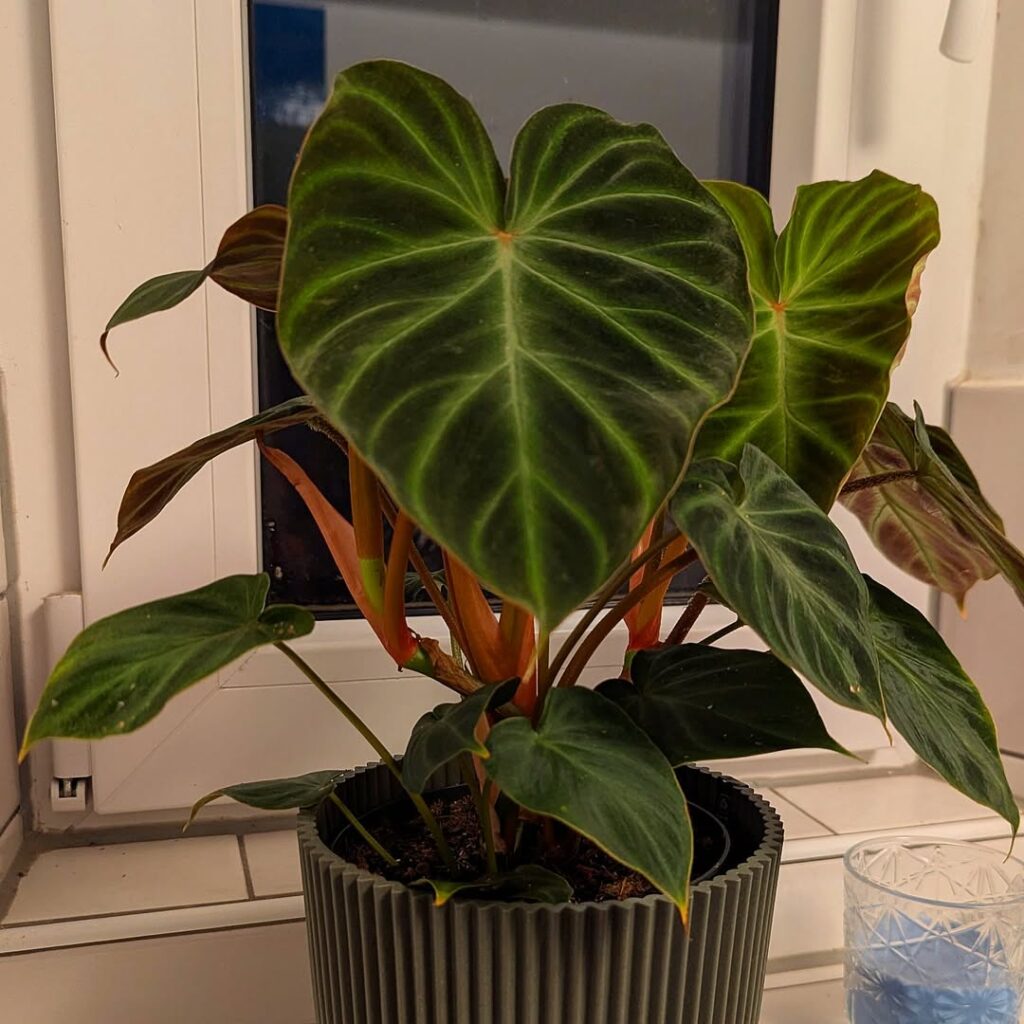
Velvety textured leaves with deep veins make Verrucosum a standout choice for plant enthusiasts.
- Light: Enjoys filtered sunlight for best leaf quality.
- Watering: Loves moisture, thriving in humid conditions.
- Suitability: Best for indoor growers who appreciate dramatic leaf patterns.
Philodendron Mamei

A silver-streaked wonder, Mamei remains upright with creeping tendencies but doesn’t require support.
- Light: Bright indirect light keeps its foliage healthy.
- Watering: Requires frequent misting in dry environments.
- Growth Habit: Compact but spreads gracefully over time.
Care Tips for Upright Philodendrons
These self-heading Philodendrons require minimal upkeep while maintaining their structured form. To keep them thriving:
- Light: Most prefer bright indirect light, though some tolerate lower levels.
- Watering: Keep the soil moderately moist, but avoid overwatering.
- Humidity: A moderate to high humidity level ensures lush foliage.
- Fertilizing: Apply a balanced liquid fertilizer once a month for optimal growth.
How to Propagate Upright Philodendrons
Unlike climbing Philodendrons, which can be propagated easily through stem cuttings, self-heading varieties require a different approach. Here are the best methods for propagating upright Philodendrons:
1. Division Method (Best for Clumping Varieties)
Many upright Philodendrons, such as Xanadu and Selloum, grow in clumps. The easiest way to propagate them is by division.
Steps:
- Step 1: Carefully remove the plant from its pot.
- Step 2: Identify natural divisions where roots and stems have separated into distinct sections.
- Step 3: Using a clean knife or hands, gently split the plant into smaller clumps, ensuring each has healthy roots and foliage.
- Step 4: Repot each division into fresh, well-draining soil and water thoroughly.
2. Rhizome Cuttings (Ideal for Thick-Stemmed Varieties)
Some upright Philodendrons, such as Imperial Red and Congo Green, can be propagated by cutting the rhizome (underground stem).
Steps:
- Step 1: Locate a thick, healthy rhizome beneath the soil.
- Step 2: Using a sterile knife, cut a segment that includes a few roots and a node.
- Step 3: Allow the cutting to dry for a few hours to prevent rot.
- Step 4: Plant the rhizome in moist soil, keeping humidity high until new growth appears.
3. Stem Cuttings (Limited Success with Some Varieties)
While most self-heading Philodendrons don’t develop long vines for easy propagation, some varieties, like Mamei and Florida Ghost, may allow stem cuttings if nodes are present.
Steps:
- Step 1: Choose a healthy stem with at least one node.
- Step 2: Cut the stem below the node using sterile shears.
- Step 3: Place the cutting in moist sphagnum moss or water until roots form.
- Step 4: Transplant into soil once a strong root system has developed.
Propagation Tips:
- Keep new cuttings warm and humid to encourage root development.
- Use rooting hormone to speed up propagation, especially for rhizome cuttings.
- Provide bright indirect light but avoid direct sun, which may stress new plants.
